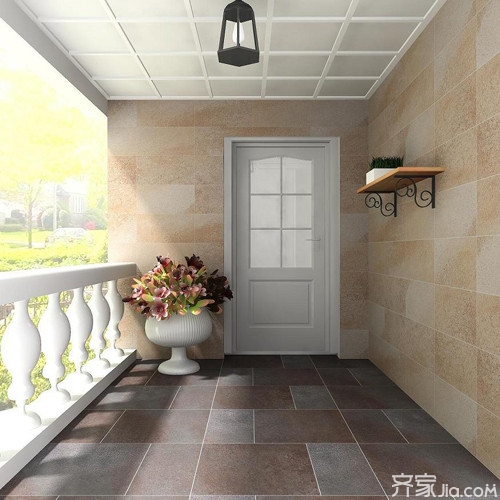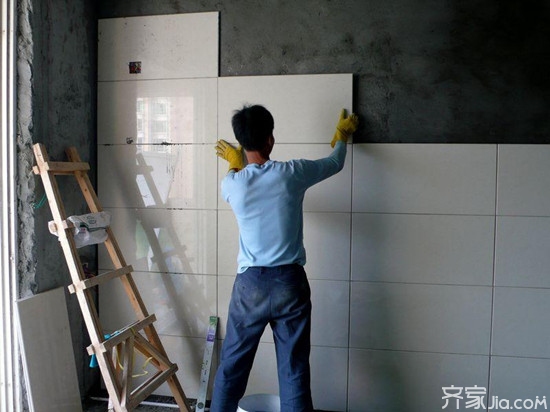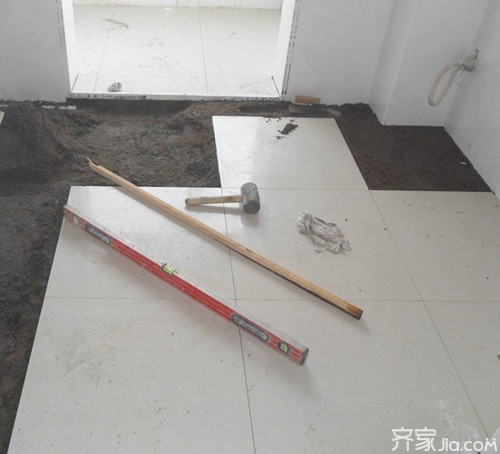When paving tiles, if the paving is not good, it will not only affect the home decoration effect, but also a waste of time, a waste of money. So, how are tiles laid ? Now let's learn how to make a ceramic tile with Xiaobian.

How to put a tile on a tile
I used to think that paving ceramic tiles is a construction master's job. I have nothing to do with me, but I have changed this naive idea; I have a little bit of pre-treatment, protection and paving of tiles, and post-paste treatment. Inadvertently, no matter how good the tiles may not be able to spread the effect you want, or even cause the tiles to be scrapped and delay the construction period. If you don't have any knowledge about paving, people will hang you and you don't know. In view of this, I have made the following outlines of the construction of the porcelain tiles in the areas of the toilets, kitchens, etc. I hope to help everyone:
1. First, the wall tiles should be laid up from the bottom up, and one wall can not be attached to the top at one time. The seams are generally 1~3 mm; the second is to deal with the smoothness of the wall surface to deal with cracks before paving; third is the bonding material. The smear should be slightly higher in the middle than it is around, and use a rubber hammer to strike the surface to fix it. This will prevent air from accumulating in the adhesive layer. At the same time to carry out the level of testing; Fourth, adhesive materials to pick and appropriate, the general wall cement and sand ratio of 1:4, the ratio of ground cement and sand 1:3.
2, the ground should be tied. There are some civil grounds that are uneven. In this case, everyone should use the cement mortar to level uneven areas. When laying, different colored tiles (darker colors) can be used to frame the surroundings while the tiles in the frame are lighter. Of course, the floor of the kitchen and the toilet must have an inclination. This is to facilitate drainage.
3, tile decoration Another thing to note is the treatment of the waterproof layer. The walls in some areas of kitchens and toilets should be highly noted. Because replacing the tiles usually damages the original cement pad waterproof layer. The remedy is to apply a layer of bituminous waterproofing before plastering. Tiles filled with white cement should also be filled.
4, the brick surface should be flat, the angle should be accurate, the interface should be on the line; the tiles should be immersed in water for half a day before use; the toilet floor should have a proper slope, can not use water after the white tile cement with white rattan brush clean white cement, Do not leave cement on the surface of the bricks. After the tiles have been laid, cover them with cardboard, etc., and wait at least 24 hours before walking on the tiles.

5, first sweep the net clean and wet, with 1:3 cement mortar primer, thickness 6 mm. The walls should be slightly hairy but they must be flat.
To calculate the number of vertical and horizontal blocks, set a horizontal grid. Paste the tiles every 3-4 days after the bottom. When tiling, first wet the wall with water, place a pad ruler at the bottom of the bottom layer of the tile, and the ruler pad must keep the horizontal line and fix it. Tiles should be pre-saturated with water and taken out to dry slightly. Adding a proper amount of 3 to 4% of 107 glue in 1:2 cement fine sand can improve the workability of the mortar. Slow down the clotting time. To facilitate the paste and prevent mortar from flowing. Apply the mortar to the back of the tile, tap the wall and tap the brick surface with a rubber mallet to fill the mortar. After pasting the bottom layer of tile, place the vertical ruler as a vertical standard. When the paste is generally started from the angle of the sun, so as not to complete the alignment of the tiles in the seam. All the vertical and horizontal seams must be aligned. The mortar on the brick surface should be wiped off when it is dry. After the paste is applied, it should be rinsed with clean water, and the seam should be wiped with white cement. Lay a tile on the plaster wall of the mortar to find the vertical and horizontal reference lines on the wall. Calculate the number of layers and paste it with cement paste mixed with 5 to 7% of 107 glue. If the wall surface is very smooth, first use a pure cement slurry to sweep it again and start to paste it when it is not dry. Because the adhesive layer is not mixed with sand, it is very thin, only 2-3 mm thick, easy to flatten when bonded, so this is a very convenient and economical method.
For toilets and toilet floors, pay attention to the slope of the return water of 1:500. After the entire floor is tiled, after 2 days of maintenance, the joints will be applied again. When the joints are wiped, the white cement is turned into a dry mass and the gap is wiped, so that the tiles are filled with white cement and the surface of the tile is wiped.

The above description of how tiles are laid is briefly introduced here. We hope to help you. For more information, please visit this website. Stay tuned.
Tiles
Ultrafine Calcium Carbonate Particles Evenly
,Ultrafine Precipitated Calcium Carbonate,Chemical Grade Calcium Carbonate,Calcium Carbonate Mineral
Changxing Wanxing Building Material Co., Ltd. , https://www.wxbuildingmaterials.com